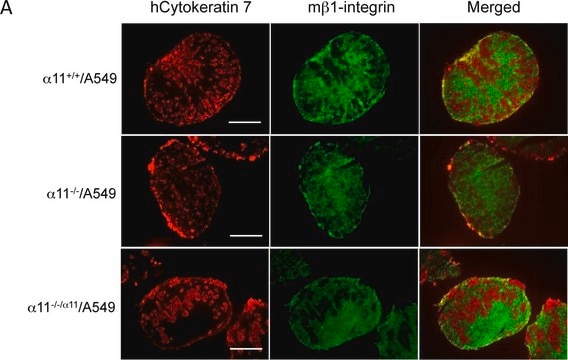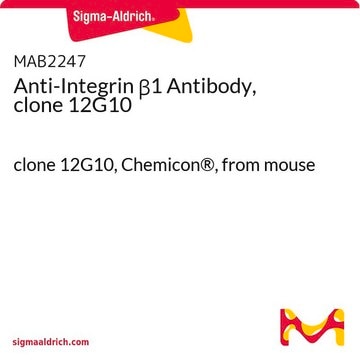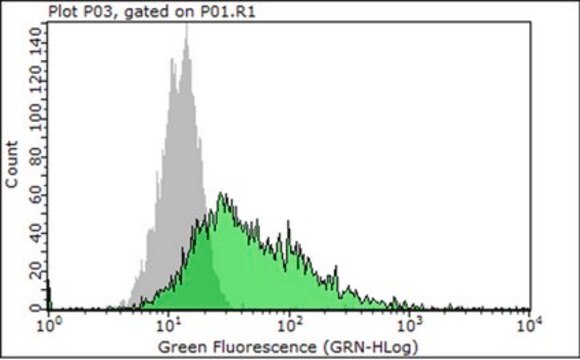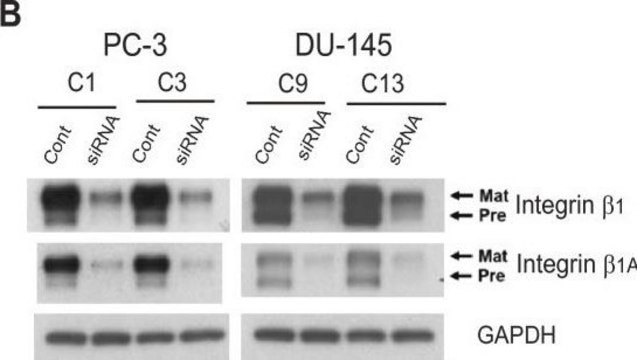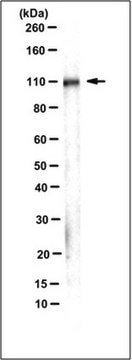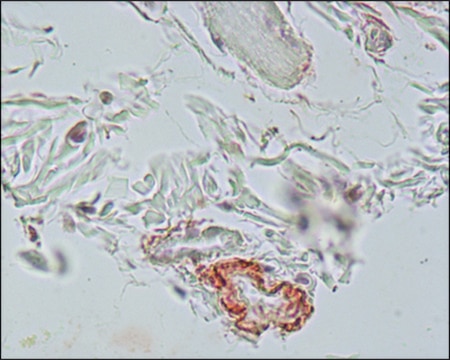I8638
Anti-Integrin β1 antibody, Mouse monoclonal
clone W1B10, purified from hybridoma cell culture
Synonym(s):
Anti-CD29
About This Item
Recommended Products
biological source
mouse
Quality Level
conjugate
unconjugated
antibody form
purified from hybridoma cell culture
purified immunoglobulin
antibody product type
primary antibodies
clone
W1B10, monoclonal
form
buffered aqueous solution
mol wt
antigen 100-140 kDa
contains
15 mM sodium azide
species reactivity
chicken
technique(s)
immunoprecipitation (IP): suitable
indirect immunofluorescence: suitable
western blot: 1:200 using denatured, non-reduced extract of cultured fibroblasts from chicken embryo lower leg
isotype
IgG1
UniProt accession no.
shipped in
dry ice
storage temp.
−20°C
target post-translational modification
unmodified
Gene Information
chicken ... ITGB1(374058)
General description
Specificity
Immunogen
Application
Biochem/physiol Actions
Physical form
Disclaimer
Not finding the right product?
Try our Product Selector Tool.
wgk_germany
nwg
flash_point_f
Not applicable
flash_point_c
Not applicable
Certificates of Analysis (COA)
Search for Certificates of Analysis (COA) by entering the products Lot/Batch Number. Lot and Batch Numbers can be found on a product’s label following the words ‘Lot’ or ‘Batch’.
Already Own This Product?
Find documentation for the products that you have recently purchased in the Document Library.
Our team of scientists has experience in all areas of research including Life Science, Material Science, Chemical Synthesis, Chromatography, Analytical and many others.
Contact Technical Service
